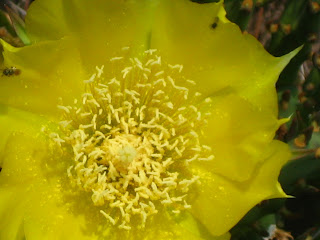 |
| I shot this salt marsh mallow about 2 miles in on the North Shore of Lake Apopka Restoration area. Below you can see the marshy area where it was growing. |
The Virginia Salt Marsh Mallow is a many-flowered plant producing large, slightly drooping pink flowers that resemble common garden hibiscus blooms. Despite "Salt Marsh" in its common name, this tall, muti-branched plant also grows in freshwater marshes throughout Florida, as you can see in the picture above. It thrives in wet conditions in the wild, but it is easily grown and makes a showy addition to the home garden. The only downside is that each blossom lasts but a single day. Several clutivated varieties are available for purchase.












